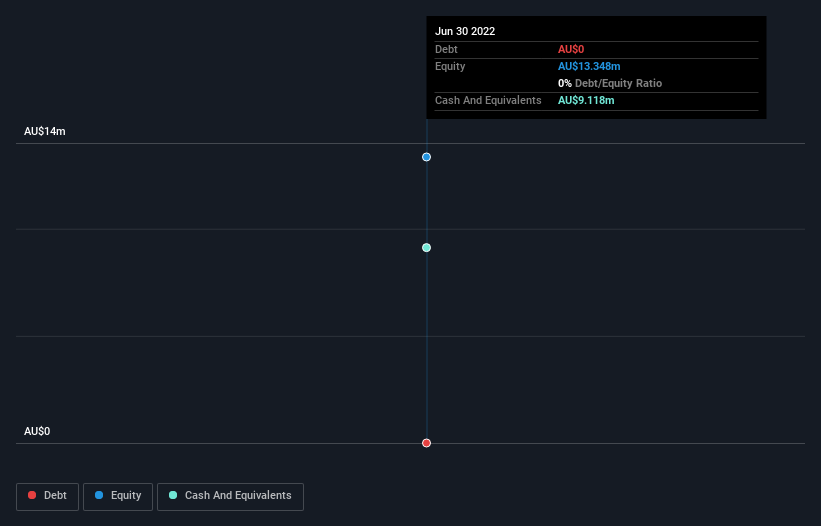- Australia
- /
- Metals and Mining
- /
- ASX:LPM
We're Not Worried About Lithium Plus Minerals' (ASX:LPM) Cash Burn
Even when a business is losing money, it's possible for shareholders to make money if they buy a good business at the right price. For example, although Amazon.com made losses for many years after listing, if you had bought and held the shares since 1999, you would have made a fortune. But while the successes are well known, investors should not ignore the very many unprofitable companies that simply burn through all their cash and collapse.
Given this risk, we thought we'd take a look at whether Lithium Plus Minerals (ASX:LPM) shareholders should be worried about its cash burn. In this article, we define cash burn as its annual (negative) free cash flow, which is the amount of money a company spends each year to fund its growth. The first step is to compare its cash burn with its cash reserves, to give us its 'cash runway'.
See our latest analysis for Lithium Plus Minerals
When Might Lithium Plus Minerals Run Out Of Money?
A cash runway is defined as the length of time it would take a company to run out of money if it kept spending at its current rate of cash burn. In June 2022, Lithium Plus Minerals had AU$9.1m in cash, and was debt-free. In the last year, its cash burn was AU$903k. That means it had a cash runway of very many years as of June 2022. Even though this is but one measure of the company's cash burn, the thought of such a long cash runway warms our bellies in a comforting way. You can see how its cash balance has changed over time in the image below.

How Hard Would It Be For Lithium Plus Minerals To Raise More Cash For Growth?
Issuing new shares, or taking on debt, are the most common ways for a listed company to raise more money for its business. One of the main advantages held by publicly listed companies is that they can sell shares to investors to raise cash and fund growth. We can compare a company's cash burn to its market capitalisation to get a sense for how many new shares a company would have to issue to fund one year's operations.
Since it has a market capitalisation of AU$41m, Lithium Plus Minerals' AU$903k in cash burn equates to about 2.2% of its market value. That means it could easily issue a few shares to fund more growth, and might well be in a position to borrow cheaply.
How Risky Is Lithium Plus Minerals' Cash Burn Situation?
Given it's an early stage company, we don't have a lot of data with which to judge Lithium Plus Minerals' cash burn. We would undoubtedly be more comfortable if it had reported some operating revenue. However, it is fair to say that its cash runway gave us comfort. Overall, we think its cash burn seems perfectly reasonable, and we are not concerned by it. Separately, we looked at different risks affecting the company and spotted 3 warning signs for Lithium Plus Minerals (of which 1 is potentially serious!) you should know about.
Of course Lithium Plus Minerals may not be the best stock to buy. So you may wish to see this free collection of companies boasting high return on equity, or this list of stocks that insiders are buying.
New: AI Stock Screener & Alerts
Our new AI Stock Screener scans the market every day to uncover opportunities.
• Dividend Powerhouses (3%+ Yield)
• Undervalued Small Caps with Insider Buying
• High growth Tech and AI Companies
Or build your own from over 50 metrics.
Have feedback on this article? Concerned about the content? Get in touch with us directly. Alternatively, email editorial-team (at) simplywallst.com.
This article by Simply Wall St is general in nature. We provide commentary based on historical data and analyst forecasts only using an unbiased methodology and our articles are not intended to be financial advice. It does not constitute a recommendation to buy or sell any stock, and does not take account of your objectives, or your financial situation. We aim to bring you long-term focused analysis driven by fundamental data. Note that our analysis may not factor in the latest price-sensitive company announcements or qualitative material. Simply Wall St has no position in any stocks mentioned.
About ASX:LPM
Lithium Plus Minerals
Engages in the acquisition, exploration, and development of lithium properties in Australia.
Adequate balance sheet with slight risk.
Market Insights
Community Narratives



